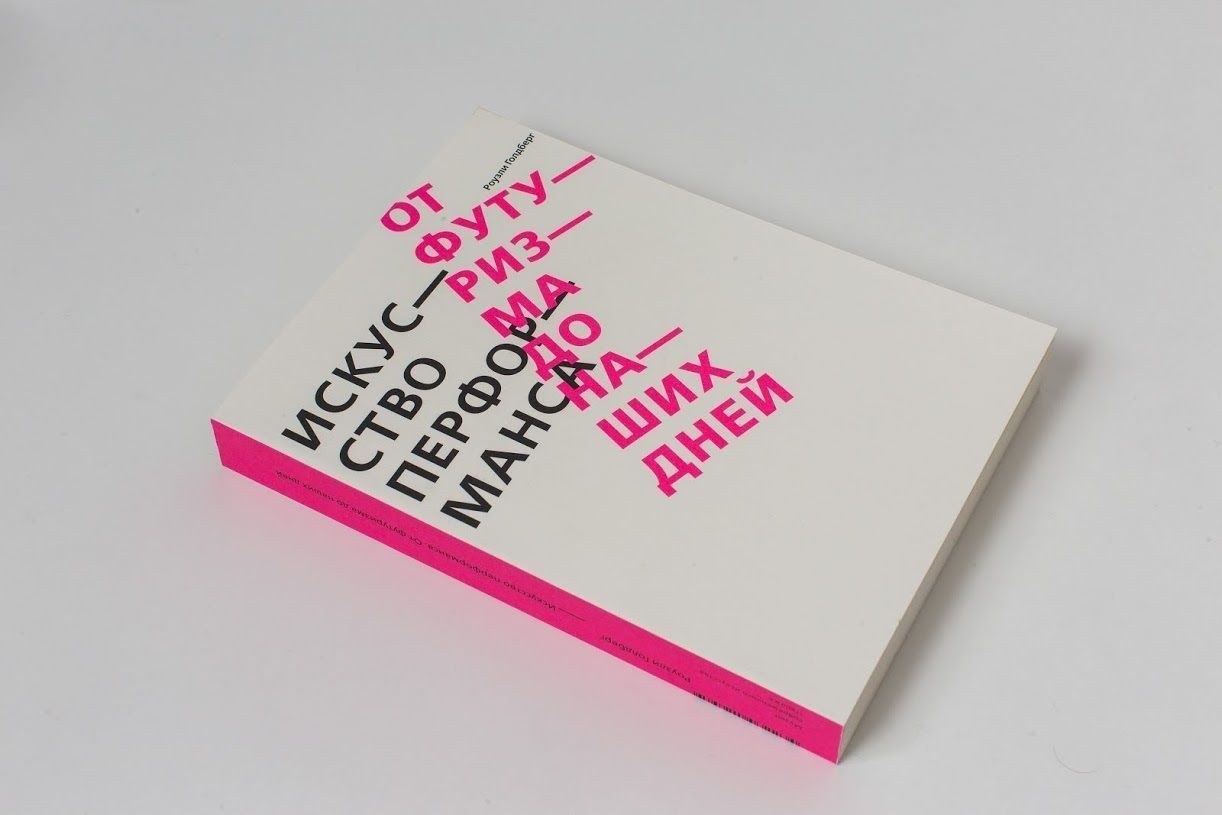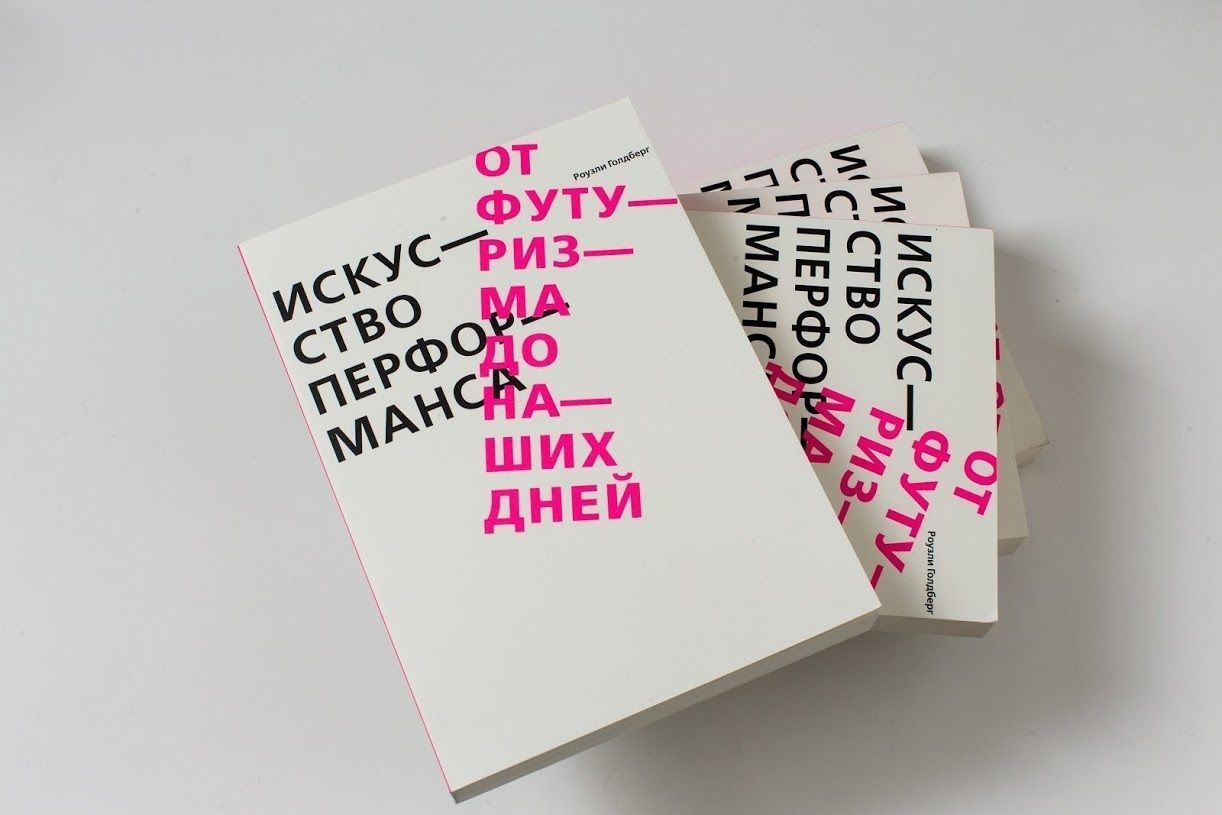Goldberg’s monograph about the hundred-year story of performance art is the most comprehensive history of the genre to date.
Performance Art by art historian, critic, and curator RoseLee Goldberg is a comprehensive study of the century-long history of the medium. First published in 1979 and extensively updated and expanded in subsequent editions (the latest revision came out in 2011), this pioneering book has been translated into eight languages. Its first Russian edition, released to accompany the international conference, Performance Art: Ethics in Action, which took place at Garage during 12-14 December 2013, is supplemented with a special chapter on contemporary Russian performance practices.
Goldberg covers the global rise of performance art from the first Futurist experiments of 1909 to the present day. For the entire period, performance has been used as an effective weapon against art conventions, a "way of bringing to life the many formal and conceptual ideas on which the making of art is based." According to the author, performance art is "avant-garde's avant-garde": "performance manifestos, from the Futurists to the present, have been the expression of dissidents who have attempted to find other means to evaluate art experience in everyday life."
Goldberg explores the multidisciplinary nature of performance art, which was evident from the beginning. The earliest Futurist efforts gravitated towards avant-garde theater and choreography. The Italian Futurists invented "synthetic" theater and developed a "dynamic and synoptic" declamatory style, accompanied by noisy music. Goldberg also stresses the connections between performance art and politics (the Italian Futurists campaigned for military action against Austria-Hungary in 1915). Similarly, the Russian Futurists and Constructivists pursued political ideas using various media, as evidenced by the opera Victory over the Sun, penned by Aleksei Kruchenykh and Mikhail Matyushin, the mass spectacle The Storming of the Winter Palace, staged by Nikolai Evreinov in November 1920, and the circus play Moscow in Flames, written and directed by Vladimir Mayakovsky in 1930 to commemorate the 25th anniversary of the 1905 Revolution.
In the 1910s, Dada in Germany and Switzerland was characterized by an "anti-academic, spontaneous, and primitive" cabaret style. Their prominent "antibourgeois" performances included works by Munich-based Frank Wedekind, Vienna-based Oskar Kokoschka, and the members of the Zürich-based Cabaret Voltaire. The German performance art of the 1920s was primarily represented by the Bauhaus school's teachers and students. Oskar Schlemmer, for example, held regular "celebrations" and festivals at the school, treating the audiences to a variety of novel performances, from mechanical and light ballets to "metaphysical parades."
A separate chapter reviews the rich performance legacy of Paris, from Alfred Jarry's outrageous escapade on the opening night of Ubu Roi (1896) to the ballet Parade (1917), a collaborative effort by Erik Satie, Pablo Picasso, Léonide Massine, and Jean Cocteau. Goldberg also looks into collaborations between the Dada and Surrealist artists in the early 1920s, as well as purely Surrealist performances, exemplified by Relâche (1924), a ballet by Francis Picabia and Erik Satie.
In the United States, performance art emerged in the late 1930s, alongside mass European immigration into New York caused by the brewing war. By 1945 it had evolved into a legitimate art form. The American innovators of the medium came from diverse artistic backgrounds; apart from visual artists and poets (Allan Kaprow, Robert Rauschenberg), the group included composers (John Cage), theater directors (Robert Whitman), and choreographers (Merce Cunningham, Yvonne Rainer). Thus, the "new choreography" and minimal music were major influences on American performance art in the 1960s.
From the late 1950s, performance art thrived in Europe, developed mainly by visual artists and sculptors, including Yves Klein (France), Piero Manzoni (Italy), and Joseph Beuys (Germany). Manzoni and Klein sought to establish the human body as a primary artistic material. Beuys' actions, or "social sculptures," were characterized by complex symbolism and a self-styled iconography.
The heyday of conceptual art in the 1970s made performance art the medium of choice for some artists who pursued the art of ideas rather than objects. They impersonated living sculptures (Vito Acconci, Gilbert & George, Jannis Kounellis) or performed "rituals" (Hermann Nitsch, Marina Abramović, Otto Muehl), produced "autobiographical performances" (Laurie Anderson, Julia Hayward) or feminist actions (Rebecca Horn, Ulrike Rosenbach). Reviving Dada's fascination with the cabaret aesthetic, many artists staged costume shows and emphasized the comical and entertainment values of the art form, thus planting it firmly into pop culture. Others embraced marginal subcultures - most prominently, the punk-rock aesthetic. The period also produced semi-theatrical plays, like Einstein on the Beach (1976), composed by Philip Glass and directed by Robert Wilson.
On both sides of the Atlantic, the "Media Generation" of the 1980s blurred the line between art and media in pursuit of entertainment and effect. The decade was also marked by the emergence of "extreme performance," with LGBT activists and HIV-positive artists making their statements on death, disease, and same-sex relationships.
In the 1990s, the West was flooded by artists from the former Soviet world, who largely used performance art to convey political messages and, as in the case of emigrants from conflict-stricken regions, to remind the global community of the horrors of war. Performance artists increasingly took up new media practices (Matthew Barney, Paul McCarthy, Sam Taylor-Wood) and gradually dissolved the barriers between actual performances and their video representations - a change facilitated by the rapid rise of the Internet.
Goldberg underlines "the huge increase in the number of twenty-first century artists around the globe turning to performance as a medium for articulating ‘difference' [...] and for entering the larger discourse of international culture in our highly mediated times. [...] Performance may well shape the coming decades of the twenty-first century as profoundly as it did the twentieth century, perhaps even more overtly than it did before," she concludes.









